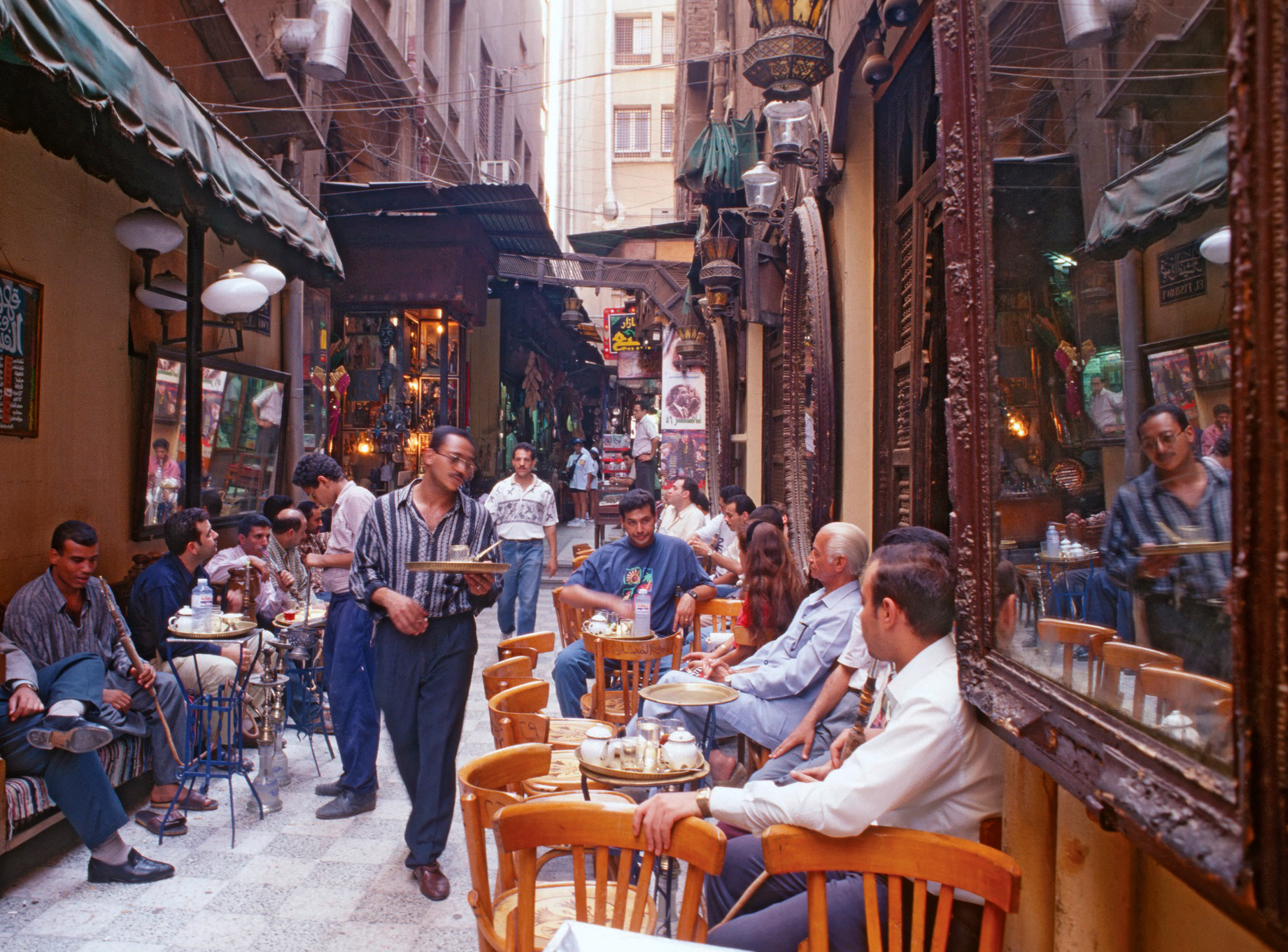
A café in Cairo, Egypt.
Friday, September 29, 2017
By Jacquie Posey
Alon Tam, a Ph.D. candidate in the Near Eastern Languages and Civilizations Department, went on what he calls an “archival tour” while researching his dissertation on 19th and 20th century Cairo coffeehouse culture. His stops included British National Archives, Durham University’s Special Collections and the Bibliotheque Nationale de France. Tam’s dissertation reconstructs Cairo’s coffeehouses as urban spaces for political organizing and explores social, class, and gender dynamics, as well as questions of modernity.
The cafés were gathering places for intellectuals, the working class, and immigrants. They helped shape a new politically active middle- and upper-class. “These were middle-class people,” says Tam, “who had a need to come together and ‘perform that class,’ which meant they dressed a certain way, went to a certain place—coffeehouses—to talk about certain subjects and have certain social rituals.”
Members of this new middle class avidly read newspapers aloud in coffeehouses and passionately discussed politics, galvanizing a new, class-based, political consciousness. During the 1919 Revolution, they organized anti-colonial demonstrations and recruited others to join their cause. Pamphlets from various nationalist parties or strike committees were regularly distributed in Cairo’s coffeehouses.
Their role in the 1919 Revolution made coffeehouses targets for state surveillance and policing. “These coffeehouses were crawling with spies who wrote about what they heard,” Tam says. “State authorities, whether Ottoman, Egyptian or British-colonial, always had an interest in knowing what was said in coffeehouses.”
In the British Foreign Office files from Cairo in 1919, Tam found hundreds of daily military intelligence reports, which had a sub-section titled “Native Opinion in Cafés and Bars.” He also had access to the personal archive of Abbas Hilmi II, the khedive, or ruler, of Egypt who reigned from 1894 to 1914, and photographic collections in the Bibliotheque Nationale which offer insights into the gender and sexual dynamics of coffeehouse culture in Egypt during this period.
“Conventional wisdom would have it that coffeehouses were mainly a male space. In my dissertation, I’m challenging that notion,” Tam says. “Women were there. They were there as entertainers, singers, dancers. They were sometimes owners.”